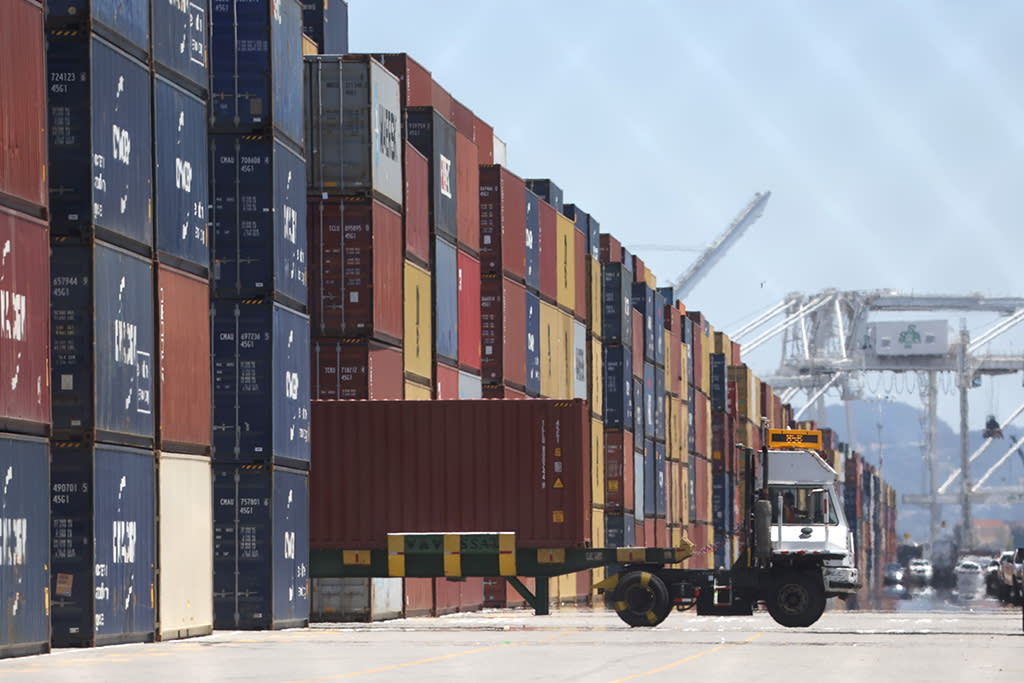88% of U.S. Small and Midsize Businesses Considering Moving Supply Chain Closer to Home

Nearly 90% of small- and medium-sized businesses in the U.S. are looking to move their supply chains closer to home in the new year.
According to a new survey released today by tech company Capterra, 88% of small and midsize businesses (SMBs) plan to or are currently switching at least some of their suppliers closer to the U.S. in 2023 following years of logistics headaches.
More from Footwear News
Over 158 Million Americans Expected to Shop During Super Saturday This Holiday Season
Buy Now, Pay Later Usage Is on the Rise This Holiday Season as Consumers Deal With Inflation
Faced with economic headwinds, operational bottlenecks and an ongoing need to remain competitive, SMBs are taking drastic action to optimize and innovate their supply chains, according to Capterra, which surveyed 300 small business supply chain professionals to better understand the challenges and solutions for navigating a changing industry.
In the same report, Capterra found that these supply chain professionals rate inflation (65%), the lack of inventory (45%) and the threat of a recession (42%) among their top three concerns going into 2023. But, while major retailers have been dealing with an influx of excess inventory, 67% of businesses surveyed said their forecasting techniques helped them avoid this same fate.
Moving into next year, more small business supply chains are investing in software-based emerging tech at twice the rate of hardware-based ones. The top three emerging tech adopted are Internet of Things (IoT) (42%), blockchain/smart contracts (41%) and artificial intelligence (39%).
“The biggest surprise in the research is that nearshoring is happening much faster than predicted at small businesses,” Olivia Montgomery, associate principal supply chain analyst at Capterra, said in a statement. “What’s less surprising, but equally critical, is the shift we’re seeing toward collaborative procurement. Supply chains are becoming less of a back-of-the-house ‘secret recipe’ and more like a joint collective where everyone benefits.”
This news comes as the U.S. West Coast ports are seeing a slowdown in ship traffic. Late last week, the Port of Los Angeles reported that cargo volume remained soft in November. The Port said it handled 639,344 Twenty-Foot Equivalent Units (TEUs) last month, a 21% decrease from November 2021. Overall, the port has handled 7% less cargo in the first 11 months of 2022 compared with last year’s all-time record.
“Imports into the United States have begun to level off, in addition to cargo that has shifted away from West Coast ports due to protracted labor negotiations,” Port of Los Angeles executive director Gene Seroka said in a media briefing on Thursday.
Trade moving through the Port of Long Beach also softened in November amid reduced orders from retailers, full warehouses, vessel transfers between the San Pedro Bay ports and goods shifted toward seaports along the East and Gulf coasts.
Long Beach dockworkers and terminal operators moved 588,742 TEUs last month, down 21% from November 2021.
Earlier this month, the National Retail Federation said that with most holiday merchandise already on retailers’ shelves or in their warehouses, December cargo volume at the nation’s major container ports should be significantly below records set earlier this year.
“Retailers are in the middle of the annual holiday frenzy, but ports are headed into their winter lull after one of the busiest and most challenging years we’ve ever seen,” NRF VP for supply chain and customs policy Jonathan Gold said in a statement. “We’ve dodged a rail strike and the retail supply chain should be able to easily handle the remaining weeks of the holiday season.”
Monthly cargo numbers repeatedly broke previous records this spring before hitting a new all-time high of 2.4 million TEUs in May.
Best of Footwear News
These Stores Are Open on Christmas Day in 2022 for Last-Minute Shopping, Live Updates
These Stores Are Offering Same-Day Delivery for Last-Minute Christmas Shoppers
Sign up for FN's Newsletter. For the latest news, follow us on Facebook, Twitter, and Instagram.

